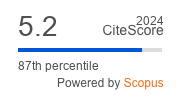Article | Open Access
Corruption and the Network Structure of Public Contracting Markets across Government Change
| Views: | 5267 | | | Downloads: | 2852 |
Abstract: Corruption is thought to affect developed economies to a greater degree than developing countries. However, given our limited capacity to detect corruption, it may simply be harder to detect it in countries with stronger institutions. This article sets out to address this measurement challenge and to offer a tailored approach to one particular type of corruption: high-level corruption in government contracting. We describe a recently developed method to score procurement contracts for corruption risk. Then, using micro-level data from Hungary and the Czech Republic we analyze how corruption can distort public procurement markets, mapped as networks of buyers and suppliers. Proxying for corruption using a composite index of red flags derived from contract awards, we find that public sector buyers with high corruption risk have sparser network neighborhoods, meaning that they contract with fewer suppliers than expected. We interpret our results as evidence that corruption in procurement markets is fundamentally about the exclusion of non-favored firms. Political change has a significant effect on corrupt relationships: High corruption risk buyers with sparse neighborhoods rewire their contracting relationships roughly 20–40% more extensively than other buyers across years with government turnover. The article demonstrates how the political organization of corruption distorts market competition in OECD countries.
Keywords: corruption; government change; markets; networks; political turnover
Supplementary Files:
Published:
Issue:
Vol 8, No 2 (2020): Fighting Corruption in the Developed World: Dimensions, Patterns, Remedies
© Mihály Fazekas, Johannes Wachs. This is an open access article distributed under the terms of the Creative Commons Attribution 4.0 license (http://creativecommons.org/licenses/by/4.0), which permits any use, distribution, and reproduction of the work without further permission provided the original author(s) and source are credited.


